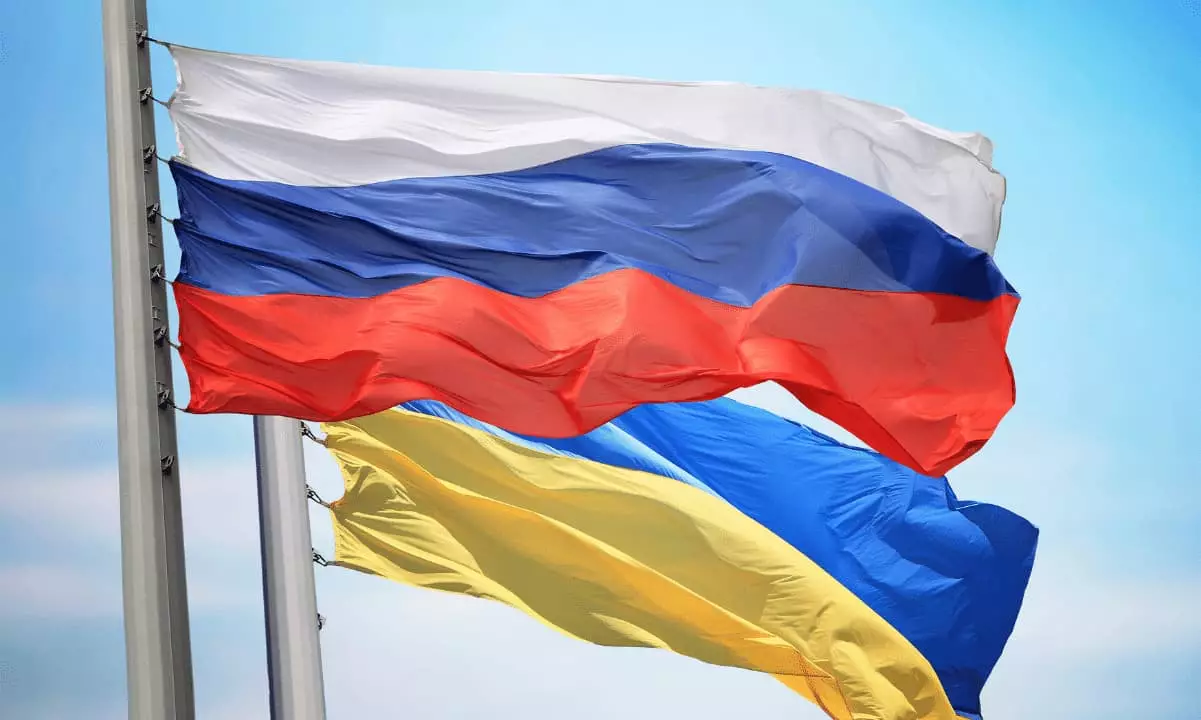In the landscape of global cryptocurrency adoption, 2023 has marked significant growth for countries such as Ukraine and Russia, which now rank 6th and 7th in the Global Crypto Adoption Index. This deserves a deeper examination, especially in light of the ongoing geopolitical turmoil and economic sanctions that have reshaped the financial behaviors of these nations. A recent report from Chainalysis provides critical insights into how these factors have incentivized the adoption of digital assets and decentralized financial systems.
Notably, Russia’s ascent, gaining six spots from its previous ranking, reflects a broader trend of adaptation in response to crippling sanctions imposed by Western nations. As the war rages on, the resilience showcased by the Russian population in seeking alternative currencies underscores a shift toward the digital economy as a survival mechanism. Simultaneously, Eastern Europe, with a remarkable total of $182.44 billion in crypto inflows directed into Russia, exemplifies how nations under pressure turn toward digital means to safeguard assets and enhance financial autonomy.
At the heart of this transformative landscape is a substantial rise in decentralized exchanges (DEXes) within Ukraine and Russia. Collectively, these platforms have observed an influx of approximately $149 billion in crypto transactions, with Russia leading at $58.4 billion and Ukraine closely following with $34.9 billion—surges of over 173% and 160%, respectively. This substantial growth highlights a pivotal transition from traditional financial systems to more peer-to-peer mechanisms, allowing users to escape restrictions imposed by state-controlled systems.
Delving deeper into transaction patterns reveals two distinctive trends: the rise of large institutional transactions and the growth in retail activity. Ukraine’s DeFi arena witnessed a staggering 361.49% increase in high-value transactions surpassing $10 million, implicating substantial institutional involvement that fueled the overall market. Conversely, retail transactions also experienced noticeable growth—82.29% and 91.99% in small and large transactions, respectively. This dual growth profile suggests not only the engagement of large institutional investors but also a grassroots movement among civilians responding to inflationary pressures and a need for stable means of exchange.
For Russia, the impact of international sanctions has led to innovative responses, including a rise in the popularity of homegrown crypto services. As centralized exchange usage plateaus, the draw towards non-KYC (Know Your Customer) exchanges in Russia grows, revealing significant traffic to platforms that maintain user anonymity. This shift can largely be understood as a strategic maneuver to navigate the restrictions placed on traditional banking channels, enabling citizens to convert their fiat currency into cryptocurrency seamlessly.
As geopolitical tensions evolve, so too does the world’s approach to finance, with Ukraine and Russia exemplifying the shifting dynamics toward cryptocurrency solutions. The rise of DEXes, coupled with the dual trend of institutional and retail transactions, showcases a transformative period in which digital currencies offer not just refuge from economic instability but also a new path to financial independence. With these developments, it remains to be seen how sustained this crypto adoption will become amid ongoing regional and global challenges.


Leave a Reply